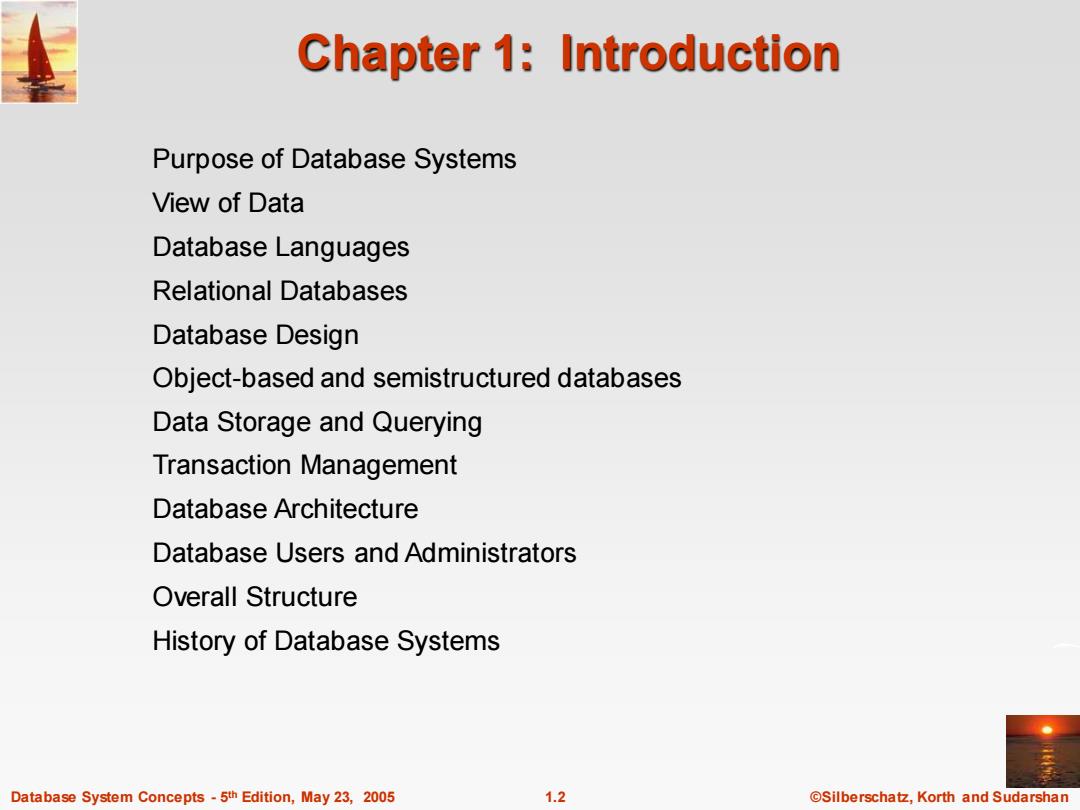
Chapter 1:Introduction Purpose of Database Systems View of Data Database Languages Relational Databases Database Design Object-based and semistructured databases Data Storage and Querying Transaction Management Database Architecture Database Users and Administrators Overall Structure History of Database Systems Database System Concepts-5th Edition,May 23,2005 1.2 @Silberschatz,Korth and Sudarshan
Database System Concepts - 5 1.2 ©Silberschatz, Korth and Sudarshan th Edition, May 23, 2005 Chapter 1: Introduction Purpose of Database Systems View of Data Database Languages Relational Databases Database Design Object-based and semistructured databases Data Storage and Querying Transaction Management Database Architecture Database Users and Administrators Overall Structure History of Database Systems
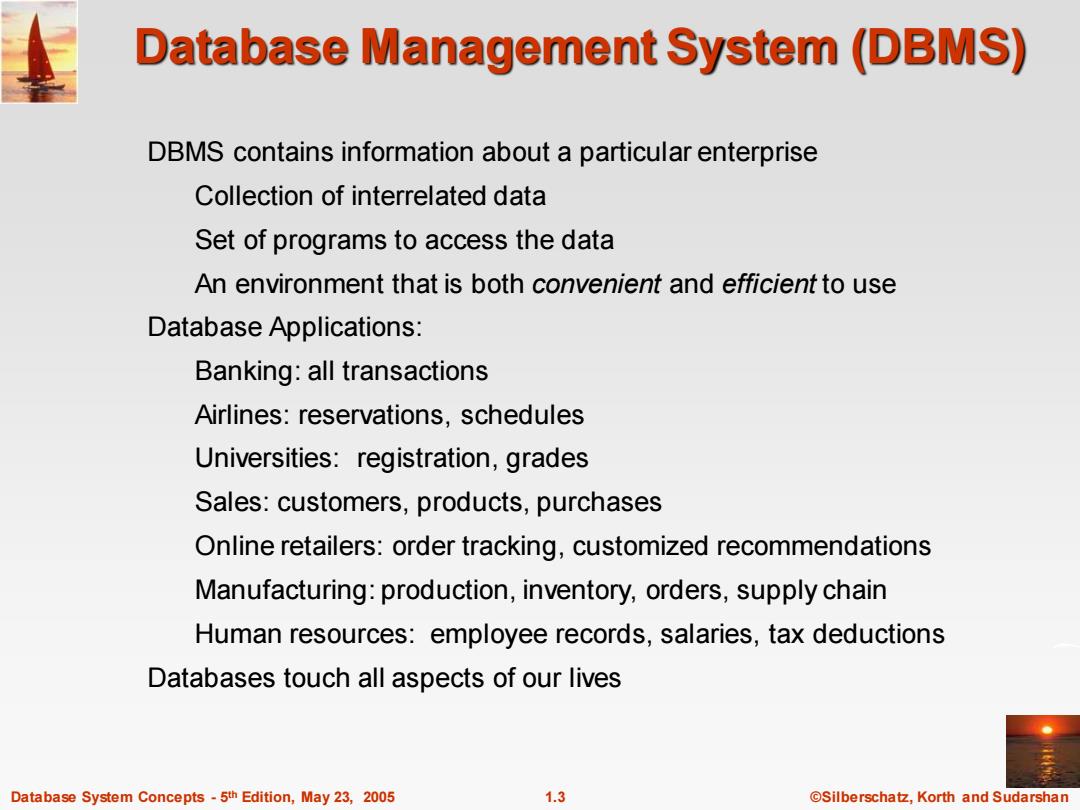
Database Management System (DBMS) DBMS contains information about a particular enterprise Collection of interrelated data Set of programs to access the data An environment that is both convenient and efficient to use Database Applications: Banking:all transactions Airlines:reservations,schedules Universities:registration,grades Sales:customers,products,purchases Online retailers:order tracking,customized recommendations Manufacturing:production,inventory,orders,supply chain Human resources:employee records,salaries,tax deductions Databases touch all aspects of our lives Database System Concepts-5th Edition,May 23,2005 1.3 ©Silberschat乜,Korth and Sudarshan
Database System Concepts - 5 1.3 ©Silberschatz, Korth and Sudarshan th Edition, May 23, 2005 Database Management System (DBMS) DBMS contains information about a particular enterprise Collection of interrelated data Set of programs to access the data An environment that is both convenient and efficient to use Database Applications: Banking: all transactions Airlines: reservations, schedules Universities: registration, grades Sales: customers, products, purchases Online retailers: order tracking, customized recommendations Manufacturing: production, inventory, orders, supply chain Human resources: employee records, salaries, tax deductions Databases touch all aspects of our lives
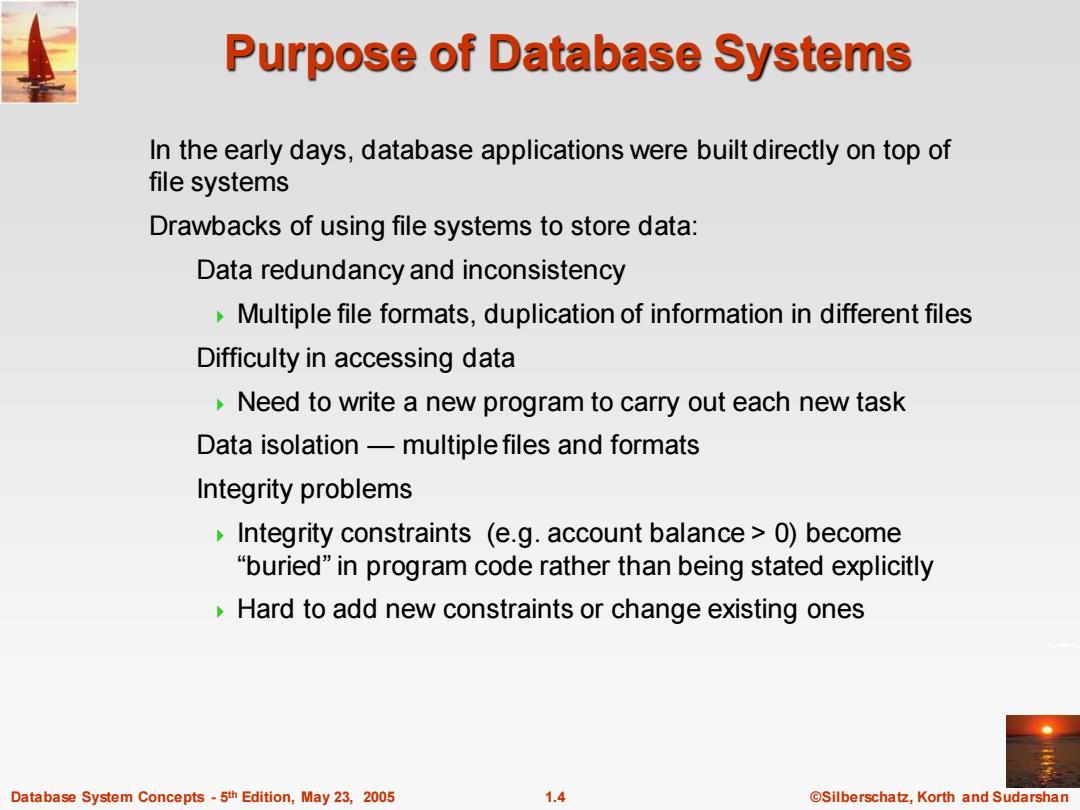
Purpose of Database Systems In the early days,database applications were built directly on top of file systems Drawbacks of using file systems to store data: Data redundancy and inconsistency Multiple file formats,duplication of information in different files Difficulty in accessing data Need to write a new program to carry out each new task Data isolation-multiple files and formats Integrity problems Integrity constraints (e.g.account balance 0)become "buried"in program code rather than being stated explicitly Hard to add new constraints or change existing ones Database System Concepts-5th Edition,May 23,2005 1.4 @Silberschatz,Korth and Sudarshan
Database System Concepts - 5 1.4 ©Silberschatz, Korth and Sudarshan th Edition, May 23, 2005 Purpose of Database Systems In the early days, database applications were built directly on top of file systems Drawbacks of using file systems to store data: Data redundancy and inconsistency Multiple file formats, duplication of information in different files Difficulty in accessing data Need to write a new program to carry out each new task Data isolation — multiple files and formats Integrity problems Integrity constraints (e.g. account balance > 0) become “buried” in program code rather than being stated explicitly Hard to add new constraints or change existing ones
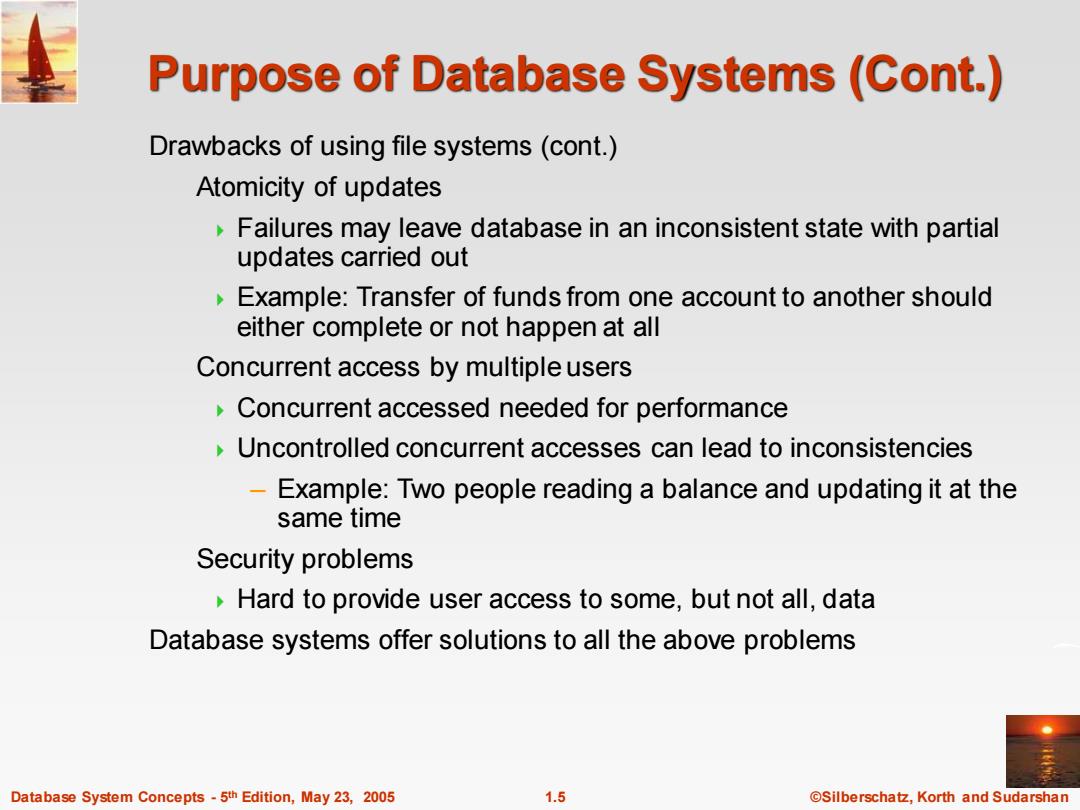
Purpose of Database Systems (Cont.) Drawbacks of using file systems(cont.) Atomicity of updates Failures may leave database in an inconsistent state with partial updates carried out Example:Transfer of funds from one account to another should either complete or not happen at all Concurrent access by multiple users Concurrent accessed needed for performance Uncontrolled concurrent accesses can lead to inconsistencies Example:Two people reading a balance and updating it at the same time Security problems Hard to provide user access to some,but not all,data Database systems offer solutions to all the above problems Database System Concepts-5th Edition,May 23,2005 1.5 @Silberschatz,Korth and Sudarshan
Database System Concepts - 5 1.5 ©Silberschatz, Korth and Sudarshan th Edition, May 23, 2005 Purpose of Database Systems (Cont.) Drawbacks of using file systems (cont.) Atomicity of updates Failures may leave database in an inconsistent state with partial updates carried out Example: Transfer of funds from one account to another should either complete or not happen at all Concurrent access by multiple users Concurrent accessed needed for performance Uncontrolled concurrent accesses can lead to inconsistencies – Example: Two people reading a balance and updating it at the same time Security problems Hard to provide user access to some, but not all, data Database systems offer solutions to all the above problems
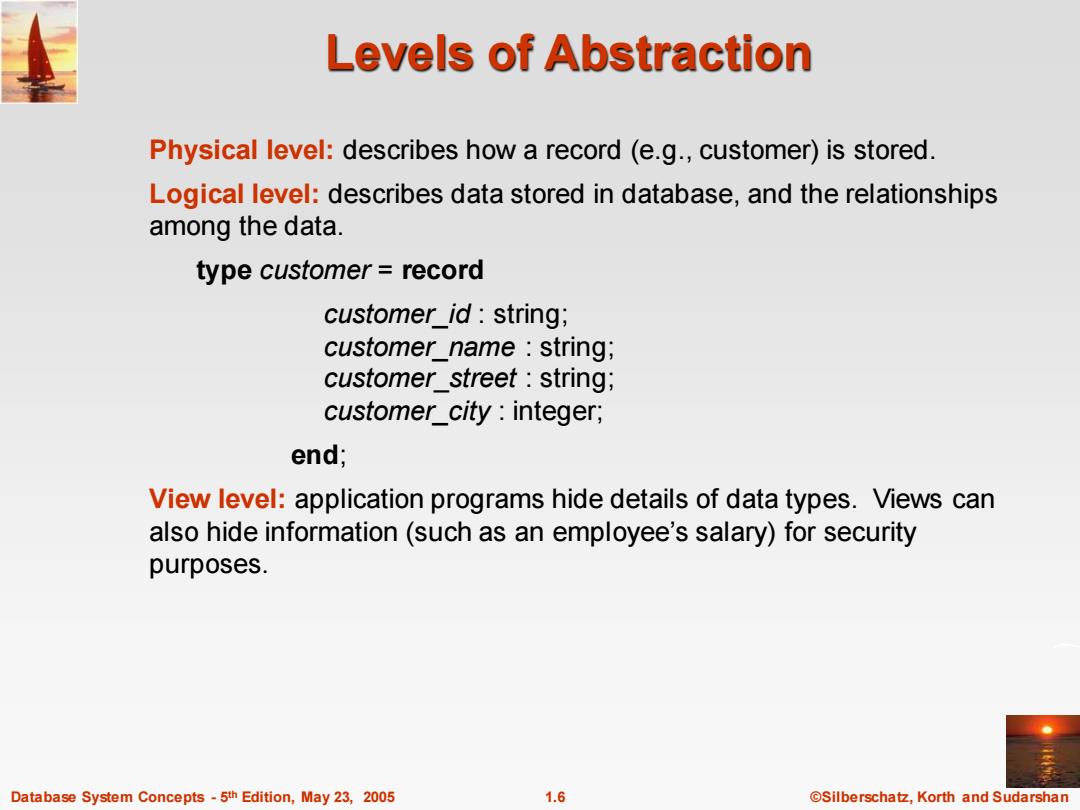
Levels of Abstraction Physical level:describes how a record(e.g.,customer)is stored. Logical level:describes data stored in database,and the relationships among the data. type customer record customer id:string; customer_name string; customer_street:string; customer_city:integer; end; View level:application programs hide details of data types.Views can also hide information(such as an employee's salary)for security purposes. Database System Concepts-5th Edition,May 23,2005 1.6 ©Silberschat乜,Korth and Sudarshan
Database System Concepts - 5 1.6 ©Silberschatz, Korth and Sudarshan th Edition, May 23, 2005 Levels of Abstraction Physical level: describes how a record (e.g., customer) is stored. Logical level: describes data stored in database, and the relationships among the data. type customer = record customer_id : string; customer_name : string; customer_street : string; customer_city : integer; end; View level: application programs hide details of data types. Views can also hide information (such as an employee’s salary) for security purposes